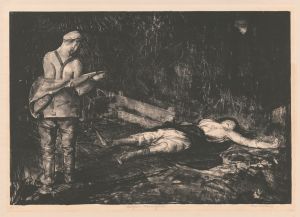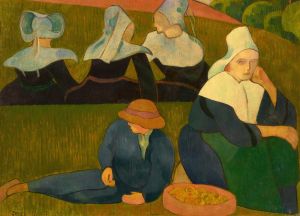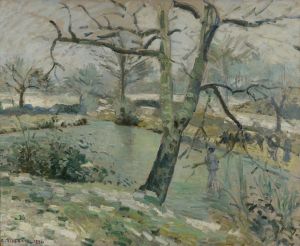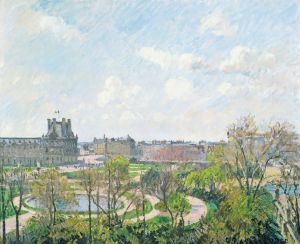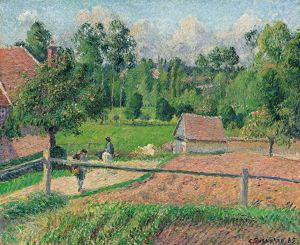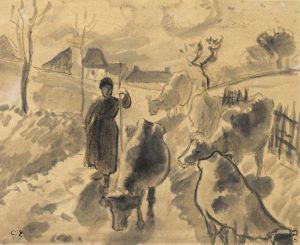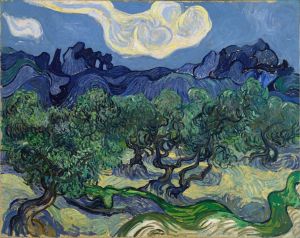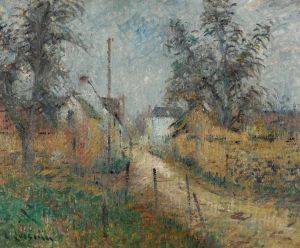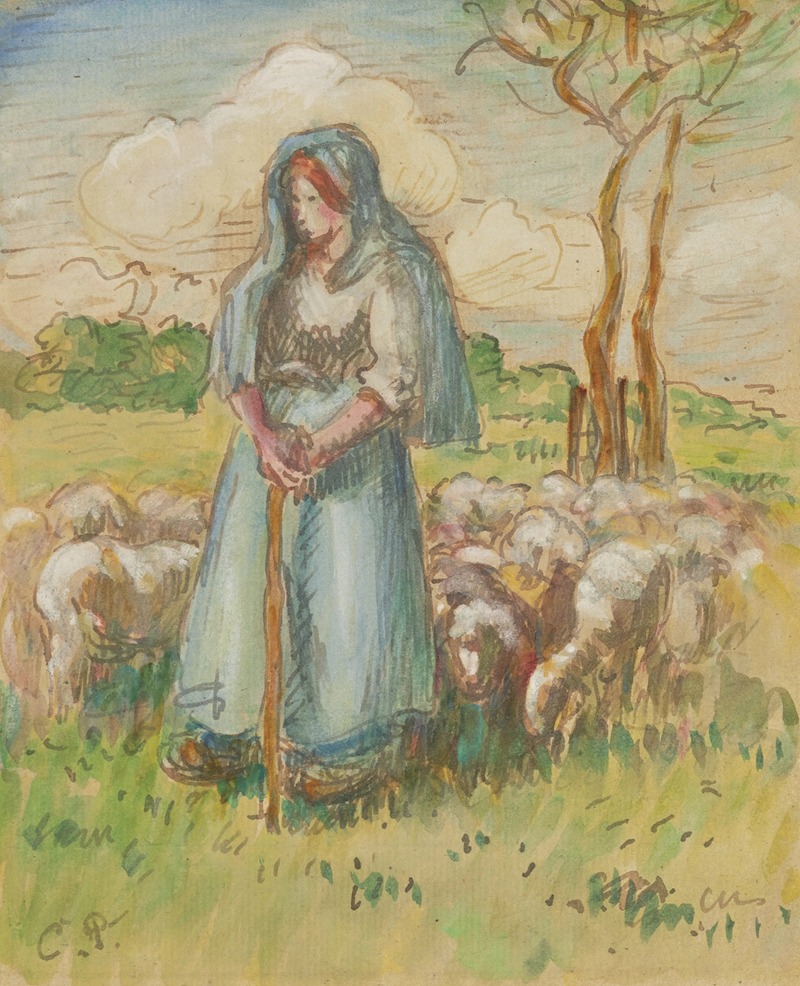
La Bergère
A hand-painted replica of Camille Pissarro’s masterpiece La Bergère, meticulously crafted by professional artists to capture the true essence of the original. Each piece is created with museum-quality canvas and rare mineral pigments, carefully painted by experienced artists with delicate brushstrokes and rich, layered colors to perfectly recreate the texture of the original artwork. Unlike machine-printed reproductions, this hand-painted version brings the painting to life, infused with the artist’s emotions and skill in every stroke. Whether for personal collection or home decoration, it instantly elevates the artistic atmosphere of any space.
"La Bergère" (The Shepherdess) is a painting by the renowned French artist Camille Pissarro, completed in 1881. Pissarro, a pivotal figure in the Impressionist movement, is celebrated for his depictions of rural life and his innovative use of light and color. "La Bergère" exemplifies these characteristics, showcasing Pissarro's dedication to capturing the essence of the countryside and its inhabitants.
The painting portrays a young shepherdess tending to her flock in a serene, pastoral setting. The composition is marked by its tranquil atmosphere and the harmonious relationship between the figure and the landscape. Pissarro's use of soft, muted colors and loose brushstrokes creates a sense of immediacy and naturalism, drawing the viewer into the quiet, contemplative world of the shepherdess.
In "La Bergère," Pissarro employs a palette dominated by earthy tones, with subtle variations of greens, browns, and blues. This color scheme not only reflects the natural environment but also enhances the painting's overall sense of calm and simplicity. The shepherdess, dressed in modest, rustic attire, is depicted with a sense of dignity and grace, emphasizing Pissarro's respect for the rural working class.
The composition of "La Bergère" is carefully balanced, with the shepherdess positioned slightly off-center, creating a dynamic yet stable arrangement. The surrounding landscape, with its gently rolling hills and scattered trees, provides a soothing backdrop that complements the figure's quiet presence. Pissarro's attention to detail is evident in the delicate rendering of the foliage and the subtle play of light and shadow across the scene.
Pissarro's interest in rural themes and his empathetic portrayal of peasant life were influenced by his anarchist beliefs and his desire to depict the realities of everyday existence. "La Bergère" reflects these concerns, presenting a vision of rural life that is both idealized and grounded in the artist's observations of the world around him.
Throughout his career, Pissarro remained committed to the principles of Impressionism, continually experimenting with techniques and approaches to capture the fleeting effects of light and atmosphere. "La Bergère" is a testament to his skill and innovation, demonstrating his ability to convey the beauty and tranquility of the natural world through his distinctive artistic vision.
Today, "La Bergère" is held in high regard as an exemplary work of Pissarro's oeuvre. It continues to be celebrated for its technical mastery, its evocative portrayal of rural life, and its contribution to the broader Impressionist movement. The painting is housed in the Musée d'Orsay in Paris, where it remains a popular attraction for visitors and art enthusiasts alike.
In summary, "La Bergère" by Camille Pissarro is a significant work that encapsulates the artist's dedication to depicting rural life with empathy and precision. Through its harmonious composition, delicate color palette, and thoughtful portrayal of the shepherdess, the painting stands as a poignant reminder of the beauty and simplicity of the natural world.





